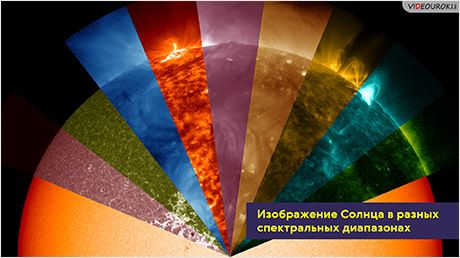This video tutorial will explore the composition of the Sun’s atmosphere. We will discover the specific layer of the Sun that emits its visible radiation. We will become acquainted with the unique entities and occurrences within the Sun’s atmosphere. Additionally, we will uncover the concept of solar activity and its cyclic nature.
At the moment, it is not possible for you to watch or share the instructional video with your students
In order to access this and other video lessons included in the package, you will need to add it to your individual account.
Outline for the Lesson “The Sun’s Atmosphere and Solar Activity”
The Sun’s atmosphere consists of multiple layers, including the photosphere, chromosphere, and corona.
The photosphere is the bottommost layer of the Sun’s atmosphere, with a thickness of no more than 300 kilometers.
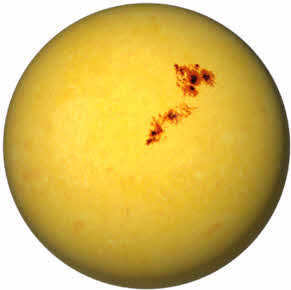
As we approach the outer edge of the photosphere, the temperature decreases from 6600 K to 4400 K. At these temperatures, the hot gas emits energy primarily in the optical wavelength range. We perceive this lower layer of the atmosphere, which appears as a bright yellow disk, as the Sun.
Upon closer examination, it becomes apparent that the surface of the photosphere consists of individual grains known as granules. These granules are large plasma bubbles with diameters ranging from 700 to 1000 kilometers.
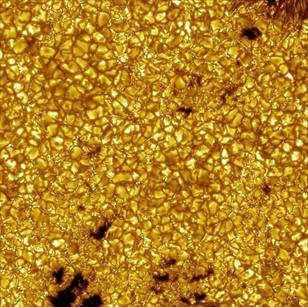
One granule appears for a short period of time, usually around 5-10 minutes. After that, a new granule takes its place, with a different shape and size compared to the previous one. The continuous process of granules appearing and disappearing in the photosphere is known as granulation.
The most prominent and well-known features in the Sun’s photosphere are sunspots. They can have a diameter of up to 200,000 kilometers, which is significantly larger than the size of our planet. However, there are also smaller sunspots known as pores.
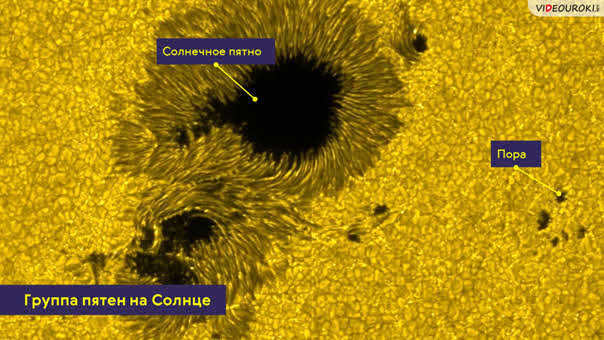
It is worth noting that the first records of sunspots can be traced back to 800 BC. Additionally, the initial illustrations of sunspots can be found in the historical account of John of Worcester in 1128.
Sunspots represent regions of “cooler” gas. Their temperature is approximately 2000-2500 o C lower than the temperature of the surrounding photosphere. As a result, they appear darker in comparison to the overall background of the Sun’s surface.
Sunspots are not static entities. Initially, they appear as small, dark regions with a diameter of less than 3000 kilometers. Many of these regions vanish quickly, but a few can grow several times in size, merge with other regions, and change their shape and dimensions over multiple rotations of the Sun.
The appearance of dark spots on the Sun is attributed by scientists to fluctuations in its magnetic field. Normally, the Sun’s magnetic induction is only twice as strong as Earth’s magnetic field. However, in certain localized areas, magnetic fields can become highly concentrated, with an induction strength of up to 0.5 Tesla. These intense magnetic fields prevent hot plasma from rising to the surface, resulting in the formation of dark spots instead of bright granules.
Even though the observation of sunspots has been occurring for centuries, the mechanism and frequency of their formation still remain unknown to scientists. On January 17, 2017, it was announced that scientists at the European Southern Observatory successfully peered “inside” a sunspot and captured images using the incredibly powerful microwave telescope known as “ALMA.” These images were taken at a wavelength of 1.25 mm. It is hoped that this breakthrough will eventually lead to a better understanding of the enigmatic magnetic structures that sunspots possess.
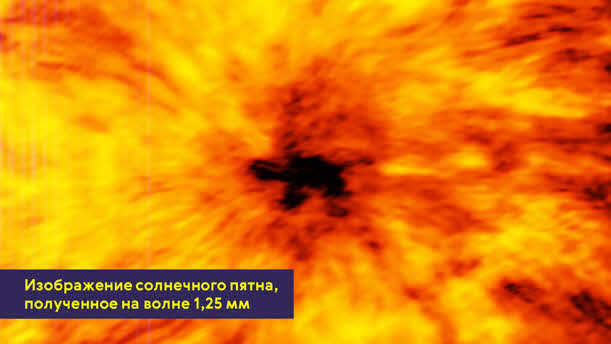
Simultaneously, in the vicinity of the sunspots, where the magnetic field is relatively weaker, convection movements become more intense. It is during this time that these vividly hued formations, known as flares, appear. These flares possess a intricate fibrous structure and have a temperature that surpasses that of the photosphere by several hundred degrees.
During a total solar eclipse, a slender band of reddish-purple or pink hue becomes visible encircling the Moon’s disk. This is none other than the chromosphere of the Sun.
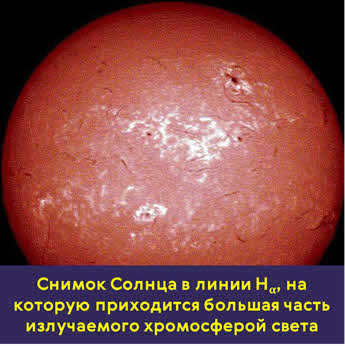
The solar atmosphere is composed of different layers. Its thickness measures approximately 10,000 kilometers. As we move up, the temperature of the matter within the atmosphere increases from 4000 K to 20,000 K. Despite the high temperature, the chromosphere appears dim due to the low density of matter in this layer.
The main component of the Sun’s chromosphere consists of spicules. These spicules are thin, luminous plasma columns that extend across the Sun. On average, a spicule has a lifespan of 5-10 minutes and can reach a maximum length of 20,000 kilometers. This led the Italian astronomer Angelo Secchi to describe the chromosphere as a burning prairie when observing it through a telescope in the late 19th century.
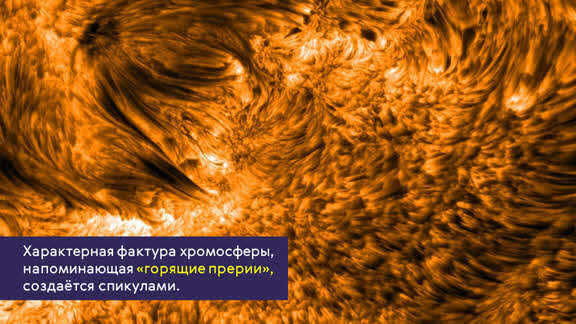
The solar corona is the thinnest and hottest part of the Sun’s atmosphere. It is several solar radii thick. Furthermore, the temperature of the plasma within it reaches 2,000,000 K.
Predominantly, the corona is composed of prominences and solar eruptions. These prominences are observable at the outermost periphery of the solar disk. They resemble colossal arches that rest upon the Sun’s chromosphere.
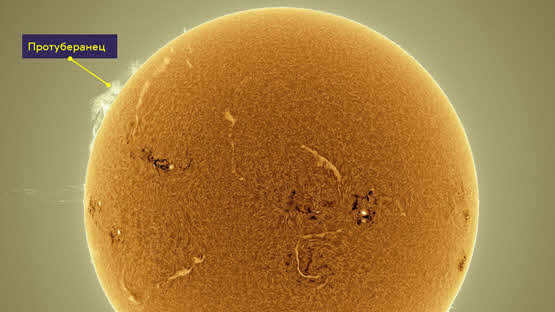
Typically, in the majority of protuberances, matter moves at a sluggish pace, and their lifespan can extend to several months. However, occasionally, the matter streams within them start to move at a considerably faster rate. This indicates that the prominence has become active. An active prominence can endure for anywhere from a few tens of minutes to a few days. Afterward, it either vanishes or transforms into an eruptive prominence. These eruptions resemble colossal fountains, shooting up as high as 2,000,000 kilometers in some instances. The speed of matter within such formations can reach several hundred kilometers per second.
Extensive research into this phenomenon indicates that it primarily happens during flares. Flares are the most intense displays of solar activity, occasionally releasing energy equivalent to the detonation of approximately 160 billion megaton atomic bombs (6 ∙ 10 25 J). To put it in perspective, this is the equivalent of global electricity consumption for over a million years.
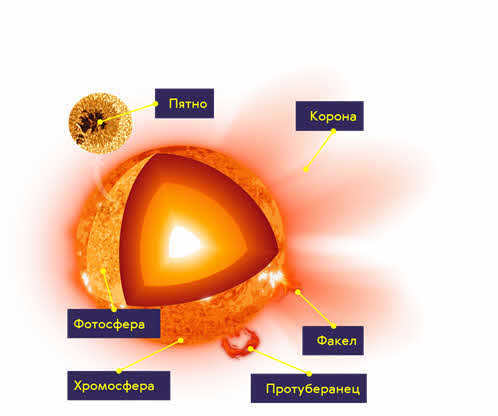
Plasma clouds created by solar flares and coronal ejections typically reach the Earth within a span of two to three days. These clouds result in geomagnetic storms on our planet, which can have varying effects on technology and living organisms, including humans.
The number of sunspots and prominences, as well as the frequency and intensity of solar flares, undergo changes in a somewhat predictable, although not entirely regular, manner. These cyclic variations in solar activity are commonly referred to as solar cyclicity.
The most well-known and extensively studied solar cycle is the Schwabe solar cycle, which has an average duration of approximately 11 years (although the actual cycles can range from 7.5 to 16 years).
After two Schwabe cycles (that is, after 22 years), the Sun’s magnetic field comes back to its original condition. This pattern is referred to as the Hale cycle in tribute to George Ellery Hale, an American astronomer.
Originating from the outer layer of the sun’s corona is the solar wind. It is a continuous stream of rarified plasma that expands, radiating outwards from the Sun along magnetic field lines and occupying the space between planets.
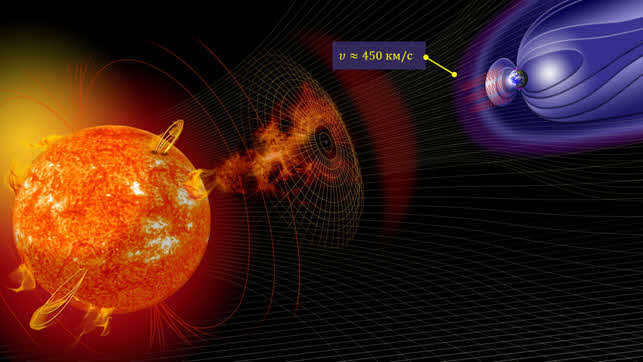
When it is near our planet, the speed of the solar wind is approximately 450 km/s and this speed increases as it moves away from the Sun. The density of the solar wind close to the Earth is very low, only a few particles per cubic centimeter.
The Earth’s magnetic field is able to resist the flow of solar plasma, causing it to flow around the Earth and creating a cavity in the shape of a drop, known as the magnetosphere. As we already know, the magnetosphere has a complex shape. On the side facing the Sun, the magnetosphere is compressed due to the pressure from the solar wind. On the night side, however, it extends with a long cylindrical tail that stretches for a significant distance, and the exact endpoint of this tail is still unknown (although some scientists believe that the length of the Earth’s magnetic tail is about 6000 times its radius).
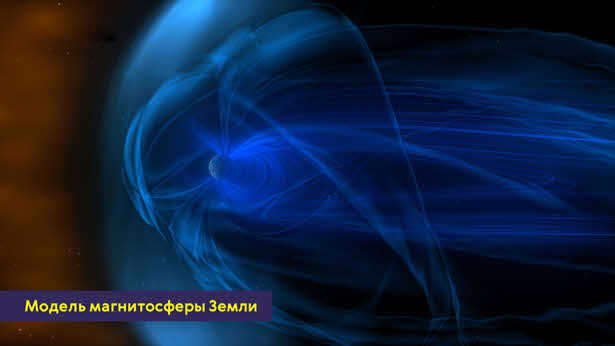
A portion of the charged particles trapped by Earth’s magnetic field create a radiation belt encircling our planet. Within this belt, protons, ions, and electrons with the highest levels of energy move about. These particles, originating from the upper atmosphere near the poles, cause the main components of nitrogen and oxygen to emit a glowing light, resulting in the phenomenon known as the aurora borealis.
Currently, spacecraft are actively employed in the study of the Sun, in addition to ground-based solar telescopes. As an example, on October 26, 2006, NASA launched two identical STEREO spacecraft into a heliocentric orbit for the purpose of observing solar activity. Positioned at different points in Earth’s orbit, they enable the study of magnetic clouds approaching the Earth from a unique angle.
In addition, the Solar Dynamics Observatory was launched on February 1, 2010. Equipped with instruments capable of capturing 12 different types of images of the Sun, this spacecraft is designed to enhance our understanding of our closest star.
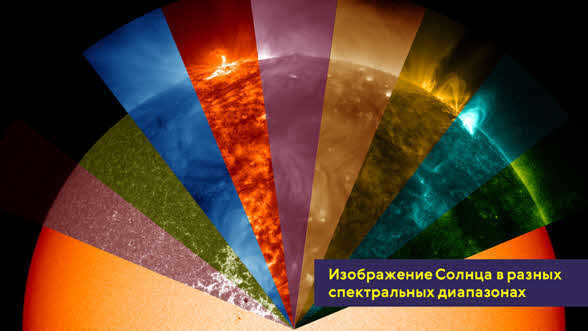
The Sun’s atmosphere is composed of different layers, each with its own unique characteristics. Scientists are able to observe details on the surface of the Sun with an angular size of 0.6 arc second thanks to the high resolution of the images. Over the course of five years, from 2010 to 2015, the space observatory gathered an enormous amount of data, totaling approximately 2,600 terabytes. This data includes more than 200 million photos capturing the Sun’s surface in incredible detail.
Here’s an interesting fact: although the Sun emits almost white light, the direct light that reaches the surface of the Earth appears to have a yellowish tint. This is due to the scattering and absorption of the short-wave part of the spectrum by the Earth’s atmosphere.
The Sun, which is approximately 5 billion years old, is just one of the countless stars within our Galaxy. It serves as the central luminary within our Solar System, providing the Earth with the necessary heat and light to sustain life. Due to its proximity to Earth, only 150 million kilometers away, we observe it in the form of a disk. The exploration of the Sun holds immense practical importance in advancing the progress of human civilization on Earth.
The measurement of the Sun’s temperature is conducted through the application of the principles of blackbody radiation (refer to section 6). The Sun emits a range of electromagnetic waves with different wavelengths, resulting in our visual perception of white light. In reality, white light encompasses a spectrum of electromagnetic waves spanning from red to violet. However, the Sun releases the greatest amount of energy in the yellow-green portion of the spectrum, leading astronomers to categorize it as a yellow star. The surface temperature of the Sun is recorded at 5780 K.
The power of radiation from the Sun depends on its luminosity. Luminosity refers to the amount of energy that the Sun’s surface emits in all directions per unit of time. To calculate the Sun’s luminosity, we need to measure the solar constant, denoted as q. The solar constant represents the energy received by 1 m2 of the Earth’s surface in 1 s when the Sun is at its highest point in the sky. To find the Sun’s luminosity, we multiply the solar constant by the surface area of a sphere with a radius R:

The distance from the Earth to the Sun, denoted as R, is approximately 1.5-1011 meters.
| The solar constant q represents the amount of energy that 1 square meter of the Earth’s surface receives in 1 second when the sun’s rays are perpendicular to the surface. Based on current data at the boundary of the Earth’s upper atmosphere, the value of the solar constant is q=1.4kW/m2. |
Structure of the Sun
The Sun has a highly intricate composition, consisting of both outer and inner layers.
Due to various physical phenomena occurring within the Sun’s core, energy is constantly emitted and transferred to the outer layers, dispersing over a progressively larger area. Consequently, the temperature of the solar plasma gradually declines as it nears the surface. Based on the temperature and the specific processes influenced by this temperature, the Sun is traditionally categorized into distinct regions characterized by varying states of matter and energy distribution: the core, the radiation zone, the convective zone, and the atmosphere (Fig. 12.1).
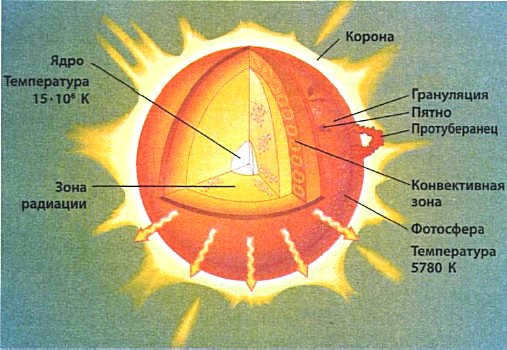
Fig. 12.1. The structure of the Sun’s interior
The area where energy is transferred by re-radiation of individual quanta is known as the radiation zone.
The Sun’s core, which occupies a relatively small volume but contains a significant portion of its mass, is characterized by its high density that increases towards the center. It is in this region where the immense pressure and ultra-high temperature enable the occurrence of thermonuclear reactions, which serve as the primary source of the Sun’s energy. The radius of the core is approximately 1/3Rz.
Surrounding the core at a distance of up to 2/3Rz is the radiative equilibrium zone, also known as the radiation zone. In this region, energy is spread through the sequential absorption and subsequent re-emission of quanta of electromagnetic energy by matter.
The convective zone of the Sun is responsible for transferring energy through convection, rather than radiation. This zone extends from the upper layer of the radiation zone to the visible boundary known as the photosphere. In this zone, matter mixes together, forming individual cells with slight variations in temperature and density.
The Sun’s atmosphere is composed of three distinct layers. The photosphere, which is the deepest layer, consists of gases and is approximately 200-300 km thick. This layer is often perceived as the surface of the Sun and has a significantly lower gas density compared to the Earth’s atmosphere. The temperature of the photosphere also decreases with altitude. The middle layer of the photosphere, which emits radiation that we can observe, has a temperature of 5780 K.
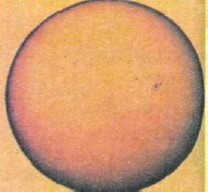
Figure 12.2: The photosphere, the innermost layer of the Sun’s atmosphere that emits light, can be observed through a solar telescope.
When using a solar telescope, we have the opportunity to study the composition of the photosphere. It is in this layer that convection cells can be seen, which have the appearance of light and dark grains known as granules (Fig. 12.3).

Fig. 12.3. Convection is demonstrated by granules in the photosphere, which measure 1000 km in diameter.
The chromosphere (from the Greek word for “colored sphere”) is located above the photosphere. In the Sun’s spectrum (Fig. 12.4), atoms of different substances create dark absorption lines in this region. The chromosphere has a total thickness of 10-15 thousand kilometers, and the temperature in its upper layers reaches 100000 K.

Fig. 12.4. The Sun’s spectrum. The chromosphere forms dark absorption lines
The outer layer of the Sun’s atmosphere, known as the solar corona, is located above the chromosphere and has a temperature of several million degrees Celsius. The solar wind is the substance from the corona that constantly escapes into interplanetary space.
For those who are interested
If we were to compare the luminosity of the Sun to its mass, we would find that 1 kg of solar matter produces a tiny amount of power, only 0.001 W. In contrast, the average radiation power of the human body is approximately 100 W, which is a thousand times greater than the power generated by the same mass of solar matter. It is worth noting that the Sun has been shining for billions of years, consistently emitting a similar amount of energy and effectively heating the Earth and other celestial bodies within the solar system.
Solar Activity
The level of solar activity is determined by the quantity and size of sunspots. Research indicates that these spots have a relatively high temperature of around 4500 K. However, they appear darker compared to the hotter photosphere, which has a temperature of 5780 K (Figures 12.5, 12.6).
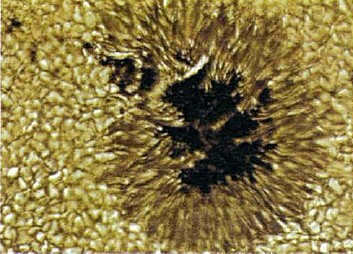
Fig. 12.5: Sunspot
An inquiry emerges: what causes the decrease in temperature within the sunspot? Sunspots may persist for a number of months, thus a hypothesis was formulated suggesting that a certain mechanism hinders plasma convection within the sunspot and sustains the temperature differential. Recent evidence has substantiated the claim that this “insulating” element is a powerful magnetic field, which interacts with electrically charged plasma particles, impeding the convection processes inside the sunspot.
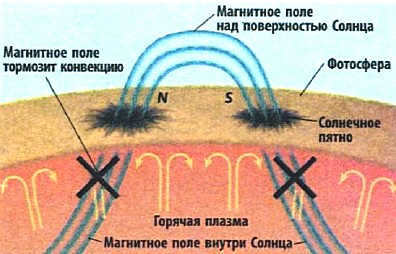
Fig. 12.6. Spots’ Connection
The Sun has another enigma connected to its periodicity – the sunspot number change cycle repeats itself about every 11 years (Fig. 12.7).

Fig. 12.7. Variations in solar activity
For those who are interested
Sunspots are connected by magnetic lines of force, similar to the poles of a magnet – each spot has its own polarity. Just like it is impossible to separate the north and south poles of a magnet, sunspots only exist in pairs that possess different magnetic polarities. Taking into account the polarity of the sunspots, the solar activity cycle lasts approximately 22 years.
How solar activity affects Earth
Through the use of satellites and AMS, scientists have discovered that the Sun emits powerful corpuscular radiation, consisting of elementary particles such as protons, neutrons, and electrons. One notable example of this radiation is observed during chromospheric flares, which occur near sunspots. These flares release an immense amount of energy, comparable to the radiation emitted by the entire photosphere of the Sun. It is important to note that flares should not be confused with prominences. Prominences, which are dense cold clouds of hydrogen, are constantly present and rise into the corona, moving along magnetic lines of force. These prominences facilitate the exchange of substances between the chromosphere and the corona.
A flare occurs when two sunspots with opposite polarity experience an increase in temperature to 5-10 6 K within a few hours, resulting in the release of energy ranging from 10 21 to 10 25 J. This amount of energy is comparable to the Sun’s luminosity in the visible spectrum. The flare primarily emits energy in the radio, ultraviolet, and X-ray ranges, rather than the visible part of the spectrum. Additionally, during a flare, streams of charged particles are expelled into interplanetary space at speeds of up to 20,000 km/s (Fig. 12.8).

Fig. 12.8. A flare occurring in the chromosphere of the Sun
Several hours after the flare, the fluxes of charged particles can reach our planet and disrupt its magnetic field, resulting in vibrant auroras visible in the ionosphere.
Final Thoughts
The Sun serves as the primary provider of energy for our society, supplying not only warmth but also exerting a profound influence on all terrestrial activities. In the times to come, sunlight will assume a pivotal role as the primary source of electrical power, both for our planet and for extraterrestrial colonies as we embark on the exploration of other celestial bodies.
Examinations
- The solar constant is responsible for:A. Determining the yearly amount of radiant energy from the Sun.
B. Determining the amount of radiant energy from the Sun in 1 second.
C. Determining the temperature of the Sun.
D. Determining the amount of energy received by the entire surface of the Earth per unit time.
E. Determining the energy received by 1 square meter of the Earth’s surface in 1 second when the Sun’s rays fall perpendicular to the surface. - In order to calculate the luminosity of the Sun, it is necessary to know:A. The radius of the Sun.
B. The radius of the Earth.
C. The distance between the Earth and the Sun.
D. The temperature at the Earth’s surface.
E. The temperature at the surface of the Sun. - Which of the following chemical elements are the most abundant on the Sun?A. Oxygen and iron.
B. Hydrogen and helium.
C. Hydrogen and oxygen.
D. Nitrogen and Oxygen.
E. Ferrum and nitrogen. - Which process releases energy in the core of the Sun?A. Nuclear fusion.
B. Gravitational compression.
C. Thermonuclear fusion.
D. Combustion of hydrogen.
E. Meteorite falls. - Granulation in the photosphere occurs as a result of:A. The corona being very hot.
B. Energy being transferred by convection.
C. The spots being very cold.
D. Neutrinos being emitted.
E. Waves appearing on the surface of the Sun. - The Sun is referred to as a yellow star, although to most people it appears white in color. How can this paradox be explained?
- What causes the temperature to decrease inside sunspots?
- What do astronomers call the phenomenon of solar activity?
- What are the processes on the Sun that can have a significant impact on the Earth’s atmosphere?
- Where does the Sun’s energy come from?
- Calculate the amount of solar energy that can be absorbed by the roof of your house in one hour at noon.
- What are some clean energy sources that you can suggest for use in your school’s community?
Observation tasks
- Count the total number of sunspots and make a sketch of their location on the Sun’s disk. Take note that sunspots often appear in pairs. After a few days, repeat the observations and you will observe the Sun’s rotation around its axis – the spots will have shifted. The number of spots may also change during this time.
Key concepts and terms:
The illustration of a sweet treat, despite the fact that not all Peekaboo readers have a fondness for confectionery, was highly effective in demonstrating the general structure of our celestial body. And given that every aspect of its appearance, ranging from its visible outer layer known as the photosphere, all the way to its corona (with Earth being situated within the Sun’s corona), as well as all the “solar activity” we witness and the recently discovered influence of “space weather” on our planet – since all of these phenomena are a direct result of the processes occurring within the Sun’s core – it follows that we will commence our exploration from its interior as well
(hurrah for successfully completing a lengthy sentence and me bringing it to a close)!
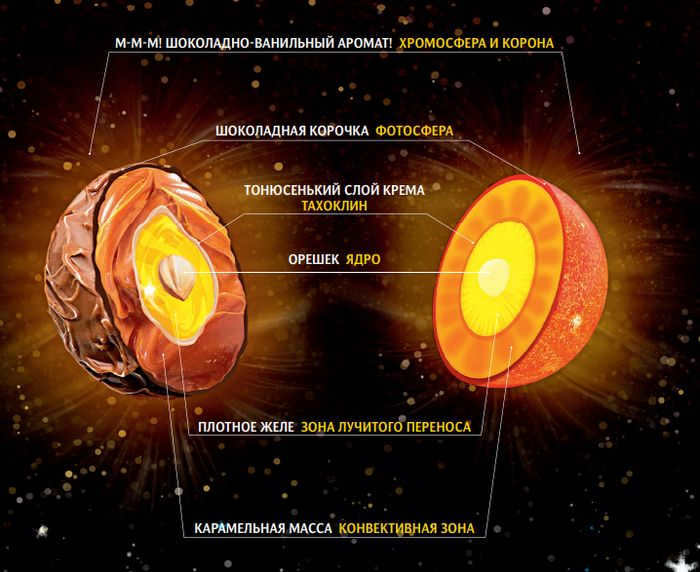
Nevertheless, for those who vehemently dislike sweets, I have chosen to present an alternative diagram illustrating the composition of the Sun (also sourced from the book “Unknown Sun” by Kirichek – Panchenko):
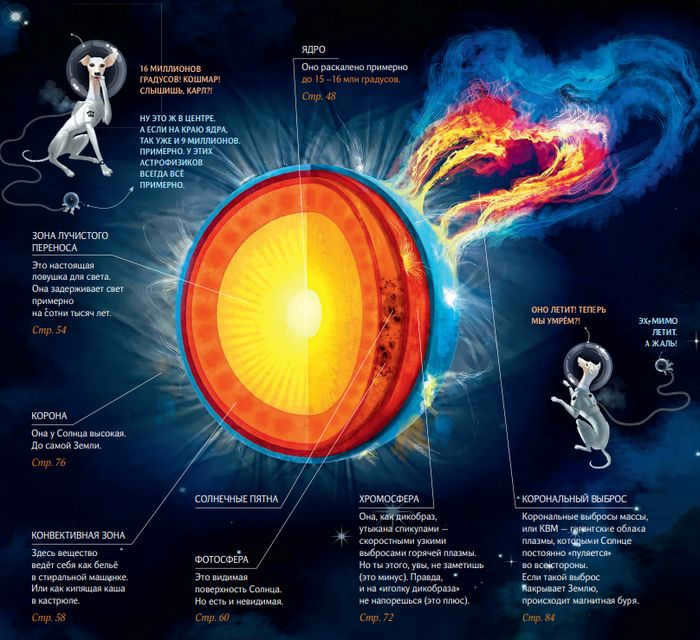
In this particular case, due to all the aforementioned points – as seen in my previous lengthy sentence – we commence with the nucleus.
However, let’s begin by comprehending the nature of these layers, their “thickness” (or more precisely, the radius length), and the density and temperature prevailing within them.
Moreover, there will be a separate and comprehensive post about each individual layer of the Sun, elucidating what transpires and how it occurs therein.
For general knowledge, the Sun’s radius is approximately 696,000 km, which is roughly 109 times the radius of the Earth (6,400 km).
The concept of the Sun’s radius is relative. The average distance from the center of the Sun to its visible surface, known as the photosphere, is estimated to be about 696,000 km.
Regarding the length along the radius, various estimates suggest it is approximately 140,000 kilometers.
The density at the center of the Sun is about 150 g/cm³.
As for the temperature, at the core’s center, it is believed to reach 12-15 million degrees, while at the outer edge of the core, it is around 9 million degrees.
Despite its high density, the Sun’s core consists of a highly ionized hot plasma, effectively making it a gas.
The core is where thermonuclear reactions occur, resulting in the conversion of hydrogen into helium and the release of radiation energy, primarily in the form of high-energy gamma quanta.
2) RADIATIVE TRANSFER ZONE.
The radial span of the Sun is approximately 310,000 kilometers.
Its density is estimated to be around 20 grams per cubic centimeter.
The temperature at the Sun’s surface reaches about 7 million degrees. However, as we move towards the outer boundary, both the temperature and density decrease sharply.
The matter within the region where radiant transfer occurs is in the form of plasma, which is a state of matter similar to gas.
Within the radiative transfer zone, energy is transferred from the Sun’s core to the higher layers. Energy quanta bounce off each other and atomic nuclei, and they are absorbed and re-emitted by atoms. During this process, the energy is “fractured” but not diminished, and it is transformed from high-energy gamma quanta to lower-energy ranges, primarily in the optical spectrum.
The radial extent of the radiative transfer zone is about 20,000 kilometers.
Its density is approximately 0.2 grams per cubic centimeter.
The temperature within this region is about 2 million degrees.
It is within this zone that the Sun’s magnetic field is primarily formed.
The temperature of the Sun ranges from 2 million degrees at its base to 6 thousand degrees at its outer boundary.
Matter efficiently transports energy, primarily in the form of optical radiation particles, to the Sun’s visible surface. How does it do this efficiently? The answer is quite effectively. The matter in the convective zone behaves like boiling porridge in a pot: it rises from the bottom of the zone as “granules” – boiling units; spreads from the center of the granules to their edges, and then descends back into the convective zone.
The Sun’s visible surface is known as the photosphere. It is located at the lower part of the Sun’s atmosphere and has a thickness of approximately 300 km. The temperature in this region ranges from about 5,800 to 6,000 degrees. The density of matter in the photosphere is extremely low, measuring only up to thousandths and even millionths of the density of Earth’s air. To put it in perspective, the density at the upper boundary of the photosphere can be as low as 10⁻⁹ g/cm³.
The upper regions of the Sun’s atmosphere are particularly visible in the chromosphere, where the Sun’s activity can be observed. The corona, on the other hand, extends even further, reaching the Earth. In the chromosphere, the temperature drops to approximately 4300 degrees Celsius, which is the minimum temperature in the transition layer. However, in the corona, the temperature rises dramatically to 1-2 million degrees Celsius. Both the chromosphere and corona are highly rarefied, but they contain a mixture of dense and empty matter.
The following section will discuss each layer individually.
When I consider the fact that we are orbiting around a glowing liquid sphere with a thin solid crust, surrounded by a thermonuclear explosion that has been ongoing for billions of years, all of my problems seem insignificant.
To the creator of the initial infographic, who had me enthusiastically examining the content to discern its meaning – my enthusiastic greetings. It’s practically radiant! Furthermore, the article is captivating, thank you.
Is that the factor that generates the intense heat of the crown? The gas within it is moving outward, expanding, which implies that it must be undergoing a cooling process. As it moves away from the sun, it would experience further cooling.
Radiative transfer. I now comprehend an alternative term for liquid excrement.
My comrades, numerous volumes have been penned on the fascinating subject of astrophysics. And thanks to the remarkable functionality of physics, we are fortunate to inhabit a world of convenience and ease. Our refrigerators operate flawlessly, our televisions provide us with endless entertainment. There is no room for doubt in their reliability. Similarly, there is no cause to question the veracity of the corona’s temperature, which reaches an astonishing 1 – 2 million degrees. For those seeking a comprehensive yet accessible resource, I highly recommend the esteemed work of Zasov – Kononovich. This textbook offers a straightforward approach, with a dearth of complex equations. It is worth noting that Edward Vladimirovich Kononovich, a distinguished presence at the defense of my thesis, deemed it worthy of the coveted title of candidate of sciences. Allow me to provide a hyperlink to the aforementioned textbook by Zasov – Kononovich, as well as an excerpt from its pages. Within these pages, the esteemed authors, professors from Moscow State University with an abundance of experience, expound upon the enigmatic nature of the corona.



The Uzbekistan Sun Institute
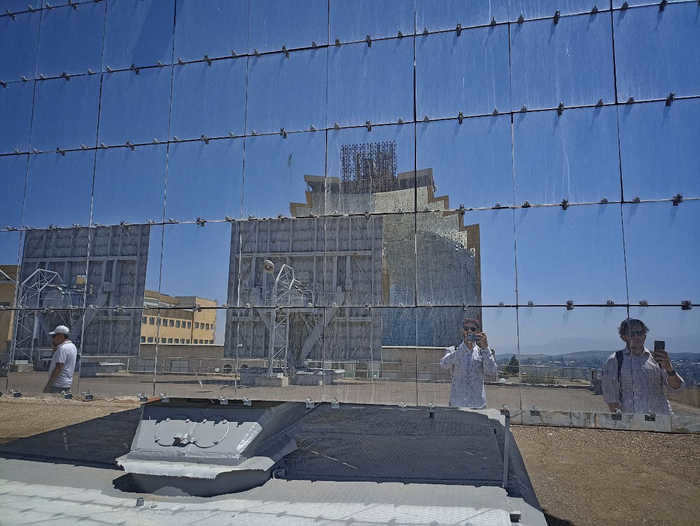

After maintaining communication with a researcher at the Sun Institute, it has been determined that my proposed multimodal route is indeed feasible. As a result, we embarked on a series of movements towards the solar complex “Sun” early in the morning.
I discovered this location through Varlamov’s information. In short, it is a facility dedicated to research and development of high-temperature technologies. Numerous industries commission research projects here, with a primary focus on materials science, astronautics, and power engineering, among others.
Let me clarify right away – this is not your typical solar power plant, it doesn’t generate electricity for cities and villages. Instead, it harnesses solar energy and converts it into thermal energy. But let’s go through everything step by step.
First, we take two subway rides to get to Mashinostroiteli station. From there, we hop on a bus headed towards Parkent, one of the suburban areas of the capital. Maybe it’s because of the higher altitude and the early hour (it’s not even 10 o’clock yet), but the heat feels a bit more bearable compared to yesterday.
As we pass by potato fields, we can see that the harvest is already underway. Large red mesh bags are neatly stacked along the road, drying in the sun. Along the way, we spot women sitting and carefully picking out tubers from the ground. And right nearby, there’s potential hay – it’s puzzling how they manage to grow both potatoes and fodder crops in the same field, isn’t it?
The condition of the road slightly worsens upon leaving the capital, although not dramatically. However, there is a shift in the types of cars on the road: Chevrolet still dominates, but there is also a presence of Soviet automobile industry competitors! Zhiguli, kopecks, eights, and even a couple of “Zaporozhtsy” can be seen, and a rather unusual sight is an old “Volga” pickup truck!
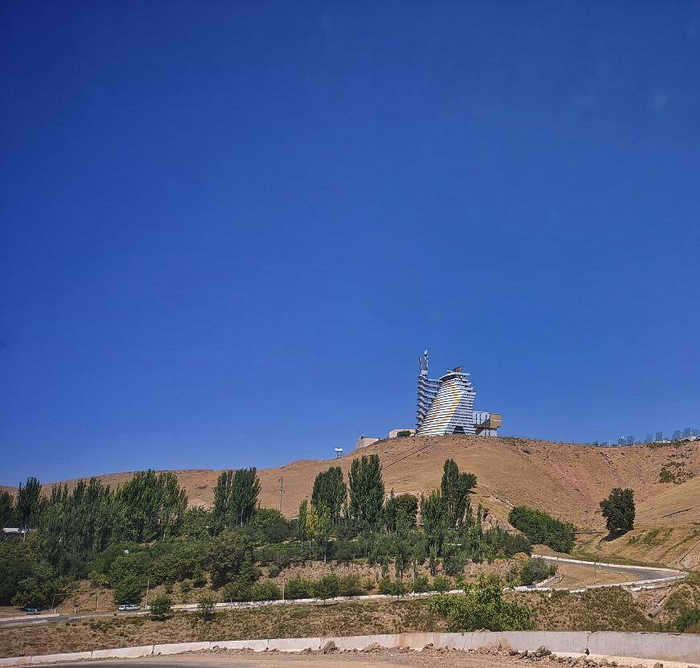
The helikomplex can be seen from the valley.
We arrived at the helikomplex from Parkent by taxi. Interestingly, the landscape has also undergone changes – there are ridges of the Western Tien Shan, so vehicles have to navigate the serpentine roads and also take us to an altitude of one kilometer.
A representation of the Institute’s grounds: on the left is the heliostat field and the concentrator-paraboloid. In front of the concentrator is the technological tower.

If you desire to have a repeat experience, it is essential to make prior contact, as this establishment does not operate as a conventional museum and requires prearranged coordination for guided tours.
Indeed, it is far more captivating than a mere museum. It offers an extraordinary experience!

The Institute of the Sun in Uzbekistan is a popular destination for travelers interested in physics and astronomy. One of the main attractions at the institute is the chandelier known as the “Sun”. This chandelier serves as a symbol for the “Parade of Planets” and is a must-see for visitors.

1. The construction of the complex took place between 1981 and 1987. There are two similar facilities in the world – one in France and the other one here in Uzbekistan. The location was carefully selected due to its mountainous terrain, which allows for a high number of sunny days throughout the year (270 days), as well as the relative seismic stability of the area.
2. This facility was also used for testing the cladding materials for the spacecraft “Buran”. Our guide, who is a former engineer turned school teacher, showed us the various tests they conducted on refractory metals, concrete, bricks, and even technologies used in medical sterilizers.
3. The complex is made up of three main components: a heliostat field, a concentrator, and a technological tower. In the field, similar to sunflowers, sunlight is gathered (panels are rotated) and directed towards the concentrator. The concentrator takes on the shape of a paraboloid, with each mirror plate being unique due to the angle of the surface curvature. This combination enables the sunlight to be concentrated at a single focal point and heat the desired location to temperatures ranging from 2000 to 4000 degrees.

5. The concentrator stands tall with 12 stories. We ascended to the highest point, where the vistas of the institute and its surroundings are breathtaking.

Overhead perspective of the heliostat field

6. Kuyosh is the name of the town located at the base of the complex. We were informed that it means “Sunny”.
They presented us with additional examples of solar-powered cooking appliances, such as a kettle or a grill that can be heated using solar panels.
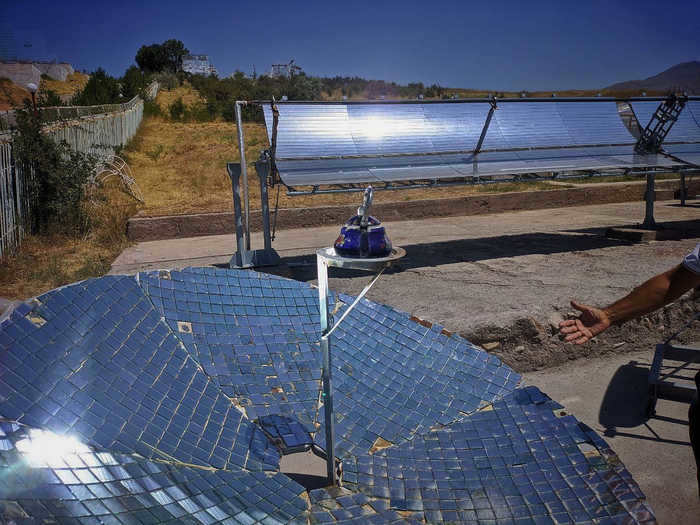
Typically, the mirrors used in this installation are not slatted, but rather monolithic. However, due to their size and weight, they are difficult to transport, despite their increased power. Some interesting optical illusions have been captured through photography.
The highest point of the station is located at an elevation of 1100 meters. As a result, the climate here is not as hot and oppressive as in the capital city.
We return to our starting point by following the same intricate route. Every minute, you can feel the surrounding atmosphere heating up, as if you were standing inside a solar furnace!
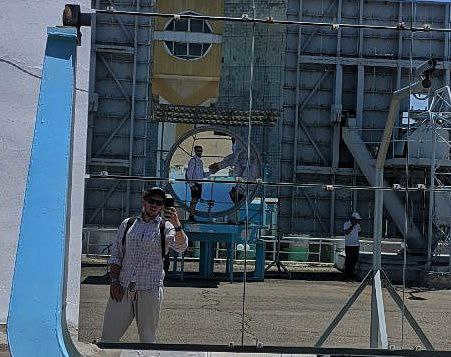
Mikhail captures an image of my mirror image, as I greet my exaggerated inverted self.
Hello, dear reader! By pure chance, I had the opportunity to witness a truly exceptional architectural marvel from the bygone era. I had the chance to wander through courtyards, explore buildings, and briefly immerse myself in the atmosphere of the USSR. However, there is a catch. To keep this post from becoming excessively long, I will divide it into two parts. That way, we can discuss each aspect separately and avoid overwhelming you with information.
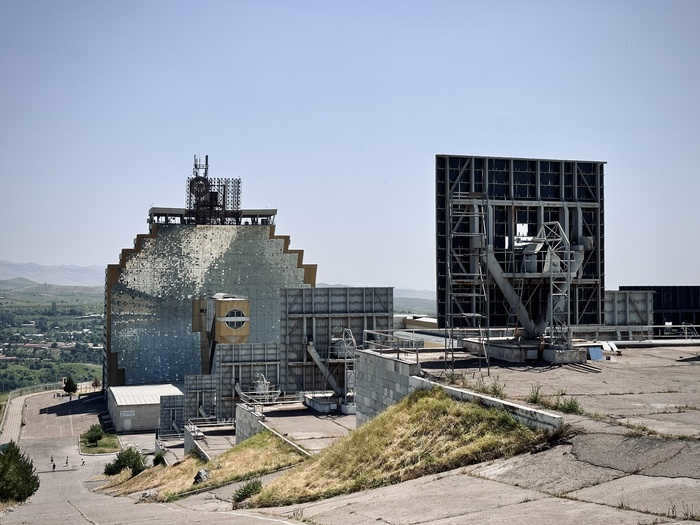
In 1981, the Heliocomplex “Sun” was established near the town of Parkent, based on the Institute of Solar Energy of the Academy of Sciences of Uzbekistan. It became operational in 1987 with the introduction of the Large Solar Oven. This innovative structure was inspired by the French Original Solar Furnace, which was constructed in 1949.

The Heliocomplex “Sun” is an innovative construction designed to harness the power of the sun. It consists of a mirrored disk that reflects sunlight onto a graphite block, which is located at the center point of the disk. The block absorbs the light and converts it into heat energy, resulting in the block reaching an extremely high temperature of up to 3000 degrees Celsius. This process is incredibly efficient, as it only takes 3 seconds for the block to reach its maximum melting temperature.

What sets apart this particular structure is its exceptional power and capability to achieve exceedingly high temperatures that cannot be attained through alternative methods. This enables the undertaking of experiments and investigations in the realms of metallurgy, chemistry, and high-temperature physics, potentially leading to the development of novel materials and technologies. Moreover, this facility stands as one of the largest solar installations on a global scale.

Once upon a time, this was the place where protective plates and materials were put to the test, which were later utilized in the construction of Buran.
Another exceptional and captivating entity can be found within the principal edifice. It symbolizes the sun and our universe, with mirrors lining the walls that give the impression of an infinite chandelier, further highlighting the vast expanse of the cosmos.

The designers from Slovakia created this stunning piece of artwork using glass with traces of gold, which gives it a captivating amber glow. Weighing a remarkable 3 tons, this masterpiece is delicately cleaned once a year to preserve the intricate handmade patterns without causing any damage.

It is unfortunate that the amber glass does not receive direct sunlight due to the positioning of the windows. However, a local staff member claims that on rare occasions and during specific hours, one can still observe the shimmering colors.
Within these structures, the wooden parquet still creaks, while the wooden handrails and distinct scent remain. The aroma is reminiscent of old libraries mixed with the scent of a grandmother’s closet, where the wedding linens for her granddaughter are stored. Yes, it is exactly the same scent.

Currently, the facility is still in the process of conducting experiments and scientific research. It is focused on developing materials that can withstand high temperatures and solar panels, as well as investigating the impact of heat on various substances. However, it is disheartening to note that this impressive structure, which can be counted on one hand, is unfortunately in a state of neglect. But that is a separate issue altogether.
Thank you for taking the time to read this article.
The information presented here is based on the accounts of the facility’s staff.

It has been discovered that the utilization of light has the potential to facilitate the transportation of various objects, leading to a significant improvement in our daily lives.

The reason behind the blue sky and white clouds
This article is a follow-up to the previous video explaining the phenomenon of the red sun.

Why is the color of the sun red?
The composition of the Sun. The region of convection
I missed Monday. Correction. I will publish two articles today.
Starting from a depth of approximately 200,000 kilometers, or from a layer with a radius of 0.7 solar radii, beneath the visible surface of the Sun (photosphere), there exists a region of convection where the Sun’s matter (plasma) moves freely due to its nature. In this layer, the temperature of the matter decreases significantly (up to 1-2 million K), as energy is distributed over a larger and larger volume of plasma. The process of radiative transfer is insufficient in this layer.
To deal with the transfer of all the released heat energy from the nucleus, another mechanism of heat transfer called convection comes into play. In the past, photons were the unit of energy transfer, but now it is granules and supergranules.
In the photosphere, which is the higher layer of the Sun, granules (their peaks) are clearly visible. Back in the 1970s, photographs first revealed the surface of the Sun, which resembled boiling porridge. Astronomers immediately referred to these granules as “grains of rice” because they mainly observed the lighter (hotter) parts of the granules.

Now we observe – once again in the photosphere – a more detailed view of the pellet structure, which appears to resemble “buckwheat grains”. (It should be noted that the colorization of the photo is unrelated to this observation, as it is a result of the Photoshop program).
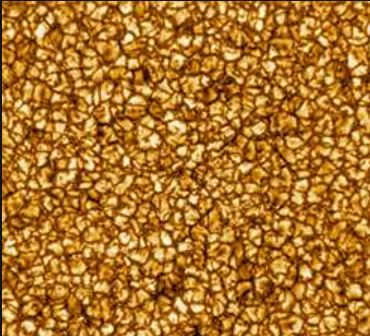
Convection is the most effective method of transferring energy in a medium, as it involves the transfer of heat along with heated matter from bottom to top. However, convection does not work in a vacuum. To understand this concept, imagine a pot of boiling soup. Through convection, the water effectively transfers heat to the vegetable pieces. The heat from the bottom of the pot, which is heated by the stove, is distributed throughout the liquid and reaches its upper layers. In the convective zone of the Sun, we can imagine a similar process occurring, although we have not yet observed it. Through calculations and simulations, we can accurately depict this convective zone.
Illustration from the novel “Unknown Sun” by Kirichek-Panchenko
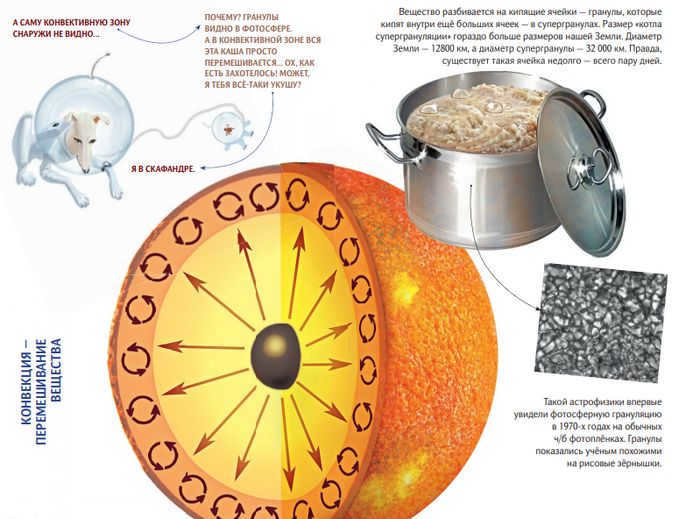
THE MOTION OF THE CONVECTIVE ZONE IS CONTINUOUSLY COMPLEX, MOVING ENERGY FROM THE UPPER BOUNDARY OF THE RADIATIVE TRANSFER ZONE TO THE PHOTOSPHERE. IN ILLUSTRATIONS, THIS PROCESS IS OFTEN REPRESENTED BY A SYMBOL LIKE RECYCLE IN THIS INSTANCE, INDICATING THAT THE ENERGY IS TRANSPORTED BY THE SUBSTANCE ITSELF, HEATING AT THE LOWER END, ASCENDING, COOLING, AND DESCENDING ONCE AGAIN.
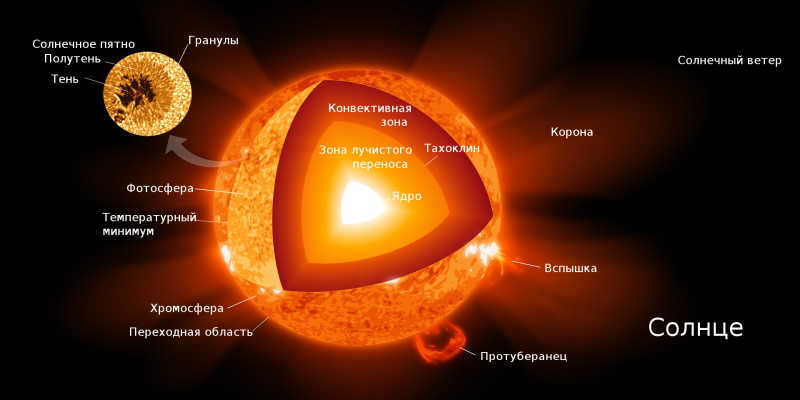
The Sun, which is the central body of the Solar System, is a unique star in our galaxy. It is surrounded by various celestial objects such as planets, satellites, asteroids, meteoroids, comets, and space dust.
About 4.5 billion years ago, the Sun was formed through the rapid compression of a cloud of molecular hydrogen by gravitational forces. This process resulted in the creation of a type 1 star in our specific region of the Galaxy.
Composed primarily of hydrogen and helium gases, the Sun is an enormous, luminous sphere. Its apparent size is deceivingly small and intensely bright due to the vast distance of 150 million kilometers that separates us from it. It takes approximately 8 1/3 minutes for light from the Sun to reach the Earth.
Being the nearest star to Earth, the Sun is located at an average distance of 149.6 million kilometers from our planet.
The temperature on the surface of the Sun is 6000 degrees, while in its core, near the center, the temperature reaches 15 million degrees. At the very center of the Sun, the temperature reaches a staggering 14 billion degrees. In the core of the Sun, hydrogen is transformed into helium, releasing an immense amount of energy.
At this incredibly high temperature, changes take place in the solar matter: hydrogen gradually undergoes a transformation, almost like it is “burning”, into helium. As a result, solar matter is converted into light and heat, which is the reason why life thrives on Earth.
Solar radiation sustains life on our planet and plays a crucial role in determining the climate.
As the Sun gradually depletes its hydrogen fuel, it becomes hotter and hotter, causing its luminosity to slowly but steadily increase.
The Sun emits light and appears to gradually decrease in size. However, due to its immense size, it will continue to radiate for billions of years despite this ongoing consumption of matter and energy.
Dark spots are frequently observed on the surface of the Sun. These spots appear dark because the solar gases within them are several hundred degrees cooler than the surrounding solar surface. The number of sunspots on the Sun undergoes periodic changes, with the maximum number occurring approximately every year. During this period, astronomers describe the Sun as being particularly active. All processes on the Sun become more turbulent, resulting in increased solar radiation that directly impacts the Earth’s environment. During years of heightened solar activity, phenomena such as the aurora borealis occur more frequently, and weather patterns become more unstable.
The solar atmosphere, which surrounds the Sun in every direction, is composed primarily of hydrogen and helium, similar to the Sun itself. When the Moon completely obscures the Sun during a total solar eclipse, a magnificent phenomenon known as the solar corona is revealed. The corona appears as a shimmering silver light with elongated projections that radiate out from the Sun. These projections represent the outermost regions of the solar atmosphere and can be observed for a brief period of time during the eclipse.
The Sun releases a continuous stream of tiny particles – protons, electrons, and others – into space. These particles, known as the solar wind, permeate the entire solar system. Occasionally, the Sun’s atmosphere experiences powerful explosions called solar flares. These flares emit a large number of extremely fast particles from the location of the explosion. Some of these flares pose a danger to astronauts in outer space or on missions to the Moon. Scientists are working on methods to predict solar flares and provide protection against them.
Scientists observe the Sun using solar telescopes at observatories. Orbiting observatories, which are not affected by Earth’s atmosphere, play a crucial role in these observations.
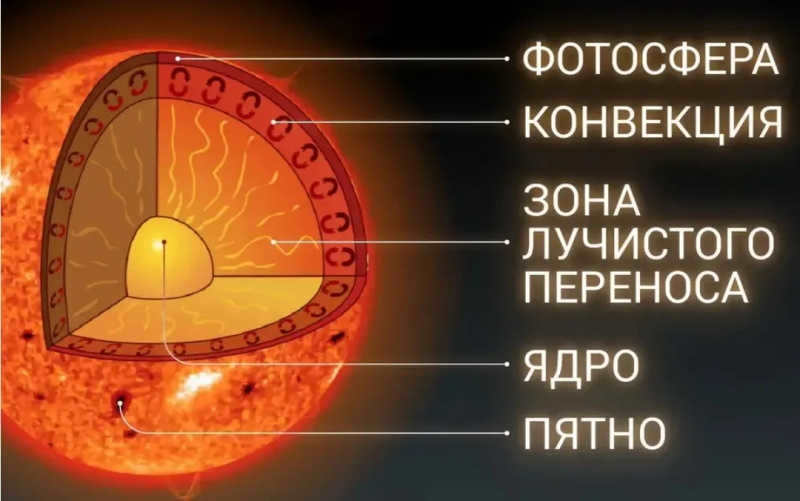
The Sun can be divided into four zones based on its structure, each with its own unique physical processes. The energy of the Sun, both radiant and thermal, originates deep within its core and is then transferred to the outer layers through radiation.
As we move closer to the surface, the transfer of heat involves convective plasma flows, creating a boiling effect. This region is known as the convective zone and begins approximately 0.7 times the radius of the Sun. Between the convective and radiative zones, there exists a thin interface called the tachocline, which is believed to be the birthplace of solar magnetic fields.
The core of the Sun
The core of the Sun, which stretches from the center of the star to a distance of 173,000 km, is an incredibly hot region. In fact, it is the hottest part of the Sun, with temperatures reaching a scorching 15 million K. This is in stark contrast to the surface temperature of the Sun, which is a mere 6 thousand K. Additionally, the density of the core is an impressive 150 thousand kg/m³, which is 150 times greater than the density of water on Earth.
Through the analysis of data collected by the SOHO spacecraft, scientists have discovered that the Sun rotates at a much faster speed in its core than it does on its surface.
The core of the Sun is a unique place in which energy and heat are generated through thermonuclear reactions. This energy then spreads through the various layers of the star, ultimately reaching the photosphere, where it is emitted as sunlight and kinetic energy.
Radiative transfer area
This area is called the radiative transfer zone because it is where the Sun’s energy is transferred from the core to the surface through radiation. Photons that are produced in the core move through the radiant zone and collide with plasma particles. As a result, even though the photons travel at the speed of light, they collide and re-emit so many times that it takes approximately one million years for a single photon to reach the upper boundary of the radiant zone and exit.
The Sun’s radiant zone begins at the edge of the core (0.2 solar radius) and extends to 0.7 radius. Within the radiant zone, the solar material is hot and dense enough for thermal radiation to transfer the core’s heat outside of the Sun.
The core of the Sun is the site of nuclear fusion reactions, where protons combine to form helium atoms. This process generates a tremendous amount of gamma rays. These high-energy photons are released, absorbed, and then released again by various particles in the radiation zone.
The path that these photons follow is known as “random wandering.” Instead of traveling in a straight line, they move in zigzag patterns until they reach the surface of the Sun. In fact, it can take an individual photon up to 200,000 years to navigate through the Sun’s radiation zone. As the photons interact with particles along their journey, they gradually lose energy. This is actually beneficial, as we wouldn’t want to be bombarded solely by gamma rays from the Sun. Once these photons reach outer space, it takes approximately 8 minutes for them to reach Earth.
The plasma density undergoes a significant reduction as it moves from the inner to the outer edge of the radiant zone, going from a density of 20 g/cm3, comparable to that of gold, to a mere 0.2 g/cm3, which is lower than the density of water. At the same distance, the temperature also experiences a decrease, dropping from 7 million degrees to approximately 2 million degrees.
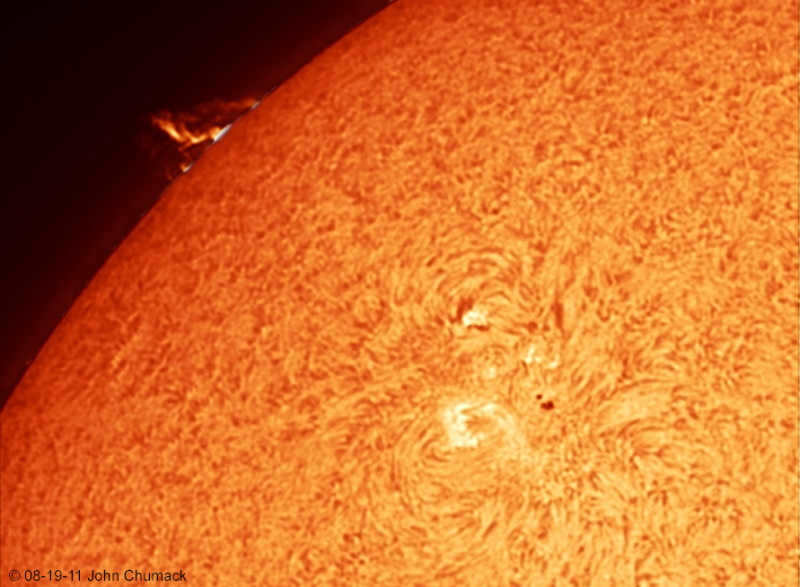
Beyond the zone of radiation lies another stratum known as the convective zone, which facilitates the transfer of heat from the Sun’s interior through columns of scorching gas.
The convective zone commences at a depth equivalent to 0.3 times the radius of the Sun and extends all the way to its surface (or more precisely, its atmosphere). The bottom of this region is heated to a staggering 2 million degrees, while the temperature at its outer boundary does not exceed 6000°C. The convective zone is separated from the radiant zone by a slender intermediate layer known as the tachocline. This area is still relatively mysterious and not extensively explored. Nevertheless, there is reason to believe that the plasma flows within the tachocline play a paramount role in the formation of the Sun’s magnetic field.
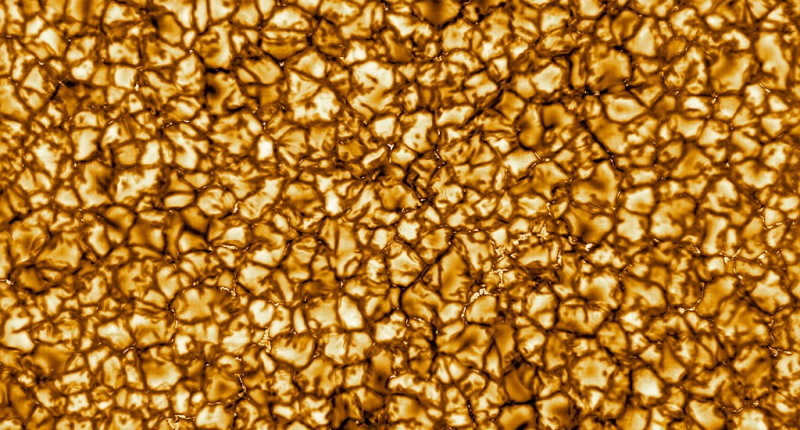
Observation of granule movement on the Sun’s surface using the Swedish Solar Telescope:
The Atmosphere of the Sun
The atmosphere of the Sun is quite intricate. All sunlight escapes into space from its lower region, known as the photosphere. The primary source of light is the lower portion of the photosphere, which has a thickness of 150 kilometers. The entire photosphere measures approximately 500 km in thickness. Along this vertical axis, the temperature of the plasma decreases from 6400 to 4400 K.
The Sun’s atmosphere comprises three outer layers, situated above the convective zone, and primarily composed (in terms of atom count) of hydrogen, with 10% helium, 1/1000 carbon, nitrogen, and oxygen, and 1/10,000 metals, along with all other chemical elements.
The atmosphere of the Sun is typically classified into three regions: the photosphere, the chromosphere, and the corona, which eventually transitions into the solar wind. The composition of the Sun’s atmosphere plays a significant role in its characteristics. It consists of the following elements:
- Hydrogen, which comprises 73% of the total mass;
- Helium, which makes up 25% of the total mass;
- Various other elements with varying concentrations.
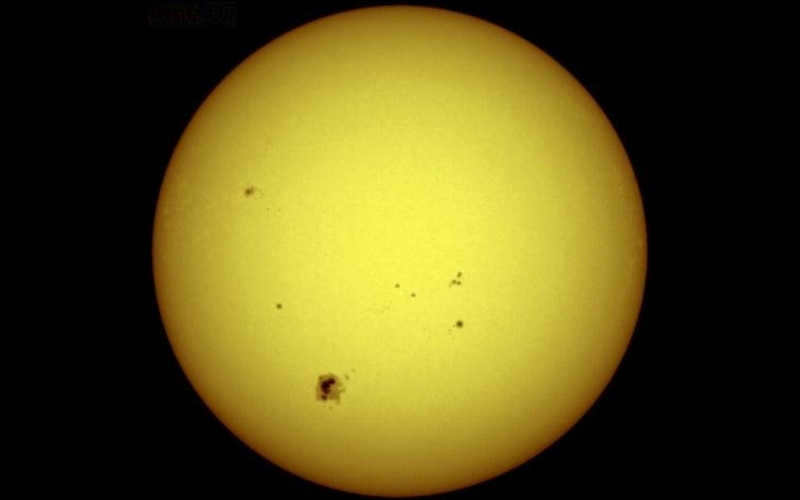
The photosphere represents the outermost layer of a star’s atmosphere, specifically the Sun, where it emits a significant amount of radiation. With a thickness ranging from 100 to 400 km, the photosphere maintains a minimum temperature of 6,600 K. This particular region plays a crucial role in determining the Sun’s size. The gas present within the photosphere is sparsely distributed, and its rotational velocity depends on the specific location. Around the equator, one complete revolution takes approximately 24 days, while in the polar regions, it occurs in roughly 30 days.
Within the photosphere, one can consistently observe areas with lower temperatures, as low as 3,700 K, which emit weaker light and appear as dark spots. The number of these sunspots fluctuates over an 11-year cycle, but they never cover more than 0.5% of the solar disk’s surface area.
Most of the Sun’s visible radiation is emitted by the photosphere, with radiation from deeper layers unable to reach us.
The photosphere’s surface is adorned with granules, ranging in size from 200 to 2000 km and lasting from 1 to 10 minutes. These granules are the peaks of convective cells found in the convective zone.
Below the photosphere, the Sun becomes opaque to visible light, forcing astronomers to utilize alternative methods for investigating the interior. The photosphere has a temperature of approximately 6000 Kelvin, resulting in the yellow-white light we observe.
Chromosphere
The chromosphere can be observed as a slender, pinkish band encircling the Sun, which becomes visible only during a complete solar eclipse. This distinct appearance is what gives it its name.

The name of this section of the solar atmosphere is derived from its reddish color, which is the result of the dominance of the red Hα (H-alpha) line of hydrogen emission in its visible spectrum. The upper boundary of the chromosphere lacks a distinct smooth surface, and it constantly emits hot emissions known as spicules. In the late 19th century, the Italian astronomer Angelo Secchi compared the chromosphere to a burning prairie when observing it through a telescope. The temperature of the chromosphere increases with altitude, ranging from 4,000 to 15,000 degrees Celsius. The chromosphere is typically divided into two zones:
- The upper chromosphere is created by the expulsion of individual spicules from the lower chromosphere, reaching heights of up to 10,000 km and separated by less dense gas. It has a higher temperature compared to the lower chromosphere, with hydrogen mostly in an ionized state, and its spectrum displays hydrogen, helium, and calcium lines.
The density of the Sun’s chromosphere is relatively low, making it difficult to observe under normal circumstances. However, during a total solar eclipse, when the Moon obstructs the bright photosphere, the chromosphere above becomes visible. It can also be observed at any time using specialized narrow-band optical filters.
Dark elongated structures called chromospheric fibers, which are also known as prominences, are frequently observed in the chromosphere. These fibers are actually clumps of denser and colder plasma that are lifted from the photosphere by magnetic field loops. Additionally, there are areas of increased brightness in the chromosphere known as flocculi. Finally, the chromosphere also features elongated plasma structures called spicules, which continuously form and then vanish after a few minutes. These spicules act as conduits, allowing matter to flow from the photosphere to the corona.
Spicules, the smallest formations in the chromosphere, possess an oblong shape and are primarily elongated in the radial direction. They measure several thousand kilometers in length and approximately one thousand kilometers in thickness. Ascending at speeds of several tens of kilometers per second, these spicules emerge from the chromosphere and dissolve into the corona. In this manner, there exists a reciprocal exchange of matter between the chromosphere and the overlying corona via the spicules. These spicules, in turn, compose a larger structure referred to as the chromospheric grid. The grid consists of individual cells measuring (30-60) x 103 km in size.
The chromosphere’s fibrillar structure is frequently detected, which reflects the characteristics of the magnetic fields transported by convection from the photosphere to the chromosphere. In other words, fibrils represent loops formed by the Sun’s surface magnetic field. The emergence of a new active region on the Sun is often accompanied by the prominent presence of fibrils. Flares and floccules can also be observed in the chromosphere during periods of heightened activity.
The solar corona is a halo of glowing gas that surrounds the Sun’s disk, emitting a dim glow. Due to its faintness compared to the Sun, the corona can only be observed during solar eclipses, when the Moon blocks the Sun’s disk.

The Sun gradually disappears “in the mouth of the dragon” (more precisely, in the shadow of the Moon) and its final ray is extinguished, giving way to the appearance of the “diamond ring” phenomenon, followed by the radiant glow of the solar corona.
The corona represents the most scorching section of the Sun’s atmosphere, with temperatures soaring to several million degrees. This intense heating can be accounted for by various models rooted in the principles of magnetic hydrodynamics. Regrettably, the intricacies of these processes remain largely enigmatic. Additionally, the corona is replete with diverse structures, including holes, loops, and streamers.
The solar corona’s visible spectrum contains three distinct components known as the L, K, and F components (also referred to as the L-corona, K-corona, and F-corona, respectively; the L component is alternatively called the E-corona). The K component represents the continuous spectrum of the corona. Visible against this background, the emission L-corona is observable up to a height of 9-10′ from the visible edge of the Sun. Beyond a height of approximately 3′ (the angular diameter of the Sun is around 30′), the Fraunhofer spectrum, which is identical to the photospheric spectrum, becomes visible. This constitutes the F-component of the solar corona. The F component dominates the coronal spectrum at a height of 20′′. The boundary separating the inner corona from the outer corona is considered to be at a height of 9-10′. Radiation from the corona is entirely emitted at wavelengths less than 20 nm. Therefore, images of the Sun at wavelengths of 17.1 nm (171 Å), 19.3 nm (193 Å), and 19.5 nm (195 Å) exclusively capture the solar corona and its elements, with the chromosphere and photosphere being invisible. The two coronal holes that are consistently present at the Sun’s north and south poles, as well as other temporary ones that appear on its visible surface, emit minimal amounts of X-rays.
Solar wind: a unique phenomenon of charged particles from the Sun
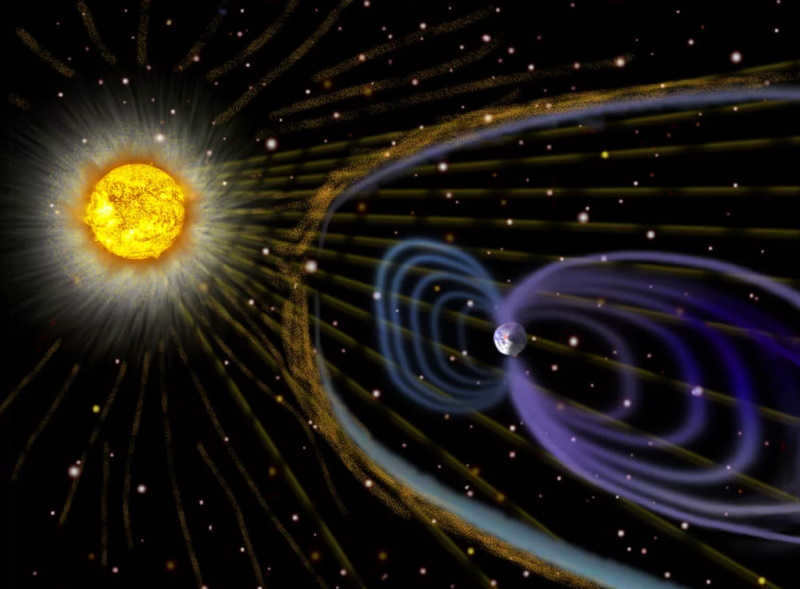
The solar wind is a flow of ionized particles that are expelled from a star in various directions at speeds exceeding 400 kilometers per second. These particles originate from the solar corona, which has an extremely high temperature that prevents gravitational forces from keeping the matter near the star’s surface. As a result, some of this matter escapes into the space between planets.
Due to the solar wind, the Sun loses approximately one million tons of material per second. The solar wind primarily consists of electrons, protons, and alpha particles (helium nuclei), while other element nuclei and non-ionized particles are present in very small quantities.
The strength of the solar wind depends on variations in solar activity and its origins. Extended observations at the Earth’s orbit (approximately 150 million km away from the Sun) indicate that the solar wind is structured and is typically categorized as calm or perturbed (sporadic and recurrent). The tranquil streams can be further classified into two types based on their velocity: slow (approximately 300-500 km/s near the Earth’s orbit) and fast (500-800 km/s near the Earth’s orbit). On occasion, the stable wind encompasses the heliospheric current layer, which separates regions with different polarity of the interplanetary magnetic field, and shares similar characteristics with the slow wind.
As it moves further away from its “origin” – the Sun, the wind loses strength and crosses multiple boundary regions. The initial boundary is located 95 astronomical units (a.u.) away from the Sun. (An astronomical unit is a unit of measurement equal to the average distance between the Earth and the Sun, approximately 149,598,100 ± 750 km). This boundary is known as the “shock wave boundary”, where the solar wind decelerates from supersonic speeds.
After traveling an additional 40 a.u., the flow of ionized particles gradually comes to a complete stop under the influence of interstellar matter. This deceleration is determined by astrophysical processes and is referred to as the heliopause. The region of space enclosed by the heliopause is known as the heliosphere.
The constantly changing streams of solar wind have the potential to obliterate all life on Earth. To safeguard against this “formidable weapon”, there exists a “reliable shield” known as the magnetosphere. The balance between these opposing forces is highly variable and often gives rise to geomagnetic storms. It is not surprising that the term “space weather” gained relevance in 1990, primarily as a reflection of the current state of Earth’s magnetic field.
The solar wind, as it circumnavigates the Earth, gives rise to a multitude of natural phenomena. These include magnetic storms, auroras, and the planet’s radiation belts. It has recently become evident that there is a correlation between the increased occurrence of lightning and the influx of ionized particles from our star.
The Impact of the Sun on Planet Earth

Influence on the natural world
The light of the Sun plays a crucial role in the existence of both animals and plants, including humans. Many species, like mammals, amphibians, and even fish, rely on sunlight to regulate their sleep-wake cycles. This is why some individuals only wake up and stay awake when the Sun is shining.
The duration of the solar day has a profound impact on the life activities of organisms on Earth. During the winter and fall seasons, when the Sun is low above the horizon in the Northern Hemisphere and the daylight hours are short, the lack of solar heat causes nature to wither and go dormant. Trees shed their leaves, and many animals, such as bears and badgers, hibernate or significantly reduce their activity during this time.
Near the poles, even in the summer, there is a lack of solar heat, resulting in limited vegetation and a barren tundra landscape. As a result, only a few animals can survive in such harsh conditions.
However, during springtime, the entire ecosystem comes alive. Grass starts to grow, trees sprout leaves, flowers bloom, and the animal kingdom thrives. All of this is made possible by the presence of just one sun. The sun’s climatic impact on Earth is undeniable. The tilt of the planet’s axis and its elliptical orbit around the sun cause solar energy to be unevenly distributed across different parts of the Earth throughout the year. This phenomenon has shaped the planet’s climate and the distribution of climate zones.
The chlorophyll found in the green leaves of plants is a vital pigment responsible for the process of photosynthesis. This natural catalyst plays a crucial role in converting carbon dioxide and water into oxygen, a fundamental element for sustaining life on Earth. Furthermore, the production of oxygen through photosynthesis has had a significant global impact, shaping the evolution of our planet and causing substantial changes in mineral composition.
The process of photosynthesis relies on the reaction between water and carbon dioxide, which requires the absorption of energy. As a result, photosynthesis cannot take place in the absence of light. Photosynthesis is responsible for converting solar energy into glucose and producing oxygen, and it is this process that gave rise to all life on Earth. Glucose serves as the fundamental building block for the synthesis of cellulose, which is found in all plant structures. Animals, in turn, obtain energy by consuming plants, which store energy from the Sun.
Influence on inanimate nature
The Earth’s surface and the lower layers of the atmosphere, known as the troposphere, play a crucial role in receiving solar energy and experiencing various meteorological events. As the Sun’s energy reaches the Earth, it is gradually absorbed by the atmosphere, resulting in only 40% of the Sun’s radiation actually reaching the Earth’s surface. The remaining 60% is reflected back into space.
Currently, there is a growing trend of increased solar heat absorption by the Earth, primarily due to the rising levels of greenhouse gases in the atmosphere (known as the Greenhouse effect). This phenomenon has a significant impact on the Earth’s climate and weather patterns, leading to the occurrence of natural phenomena such as fog, rain, snow, hail, thunderstorms, tornadoes, and hurricanes. These events are influenced by the interaction between sunlight and changes in atmospheric pressure, which can be either gradual or sudden.
Various ocean currents such as the Gulf Stream, the West Wind Current, and others are responsible for the movement of vast amounts of water on our planet. These currents play a crucial role in supporting life on Earth. Additionally, the sun’s heat leads to the formation of clouds, the occurrence of hurricanes, the blowing of wind, and the creation of waves in the ocean. These processes, along with the gradual but irreversible weathering and erosion of rocks, contribute to the incredible diversity, uniqueness, and beauty of our planet.
All these remarkable phenomena are a result of specific types of solar radiation affecting the Earth. Specifically, it is primarily the visible and infrared radiation that has a significant impact on our planet. This radiation heats the Earth, shapes its weather patterns, and determines its overall thermal conditions.
Tidal forces generated by the gravitational pull of the Sun (which is approximately half as strong as the Moon’s tidal forces) play a role in the creation of tides in the Earth’s oceans and seas.
Impact of the solar wind
Furthermore, the Earth’s atmosphere is infiltrated by a flow of ionized particles (primarily helium-hydrogen plasma) emanating from the solar corona at a velocity of 300-1200 km/s into the surrounding space (known as the solar wind), observable in many regions near the poles of the planet as the “northern lights” (aurora borealis).
Many natural phenomena are linked to the solar wind, including magnetic storms, auroras, and various types of comet tails that always point away from the Sun.
Solar activity leads to disruptions in the Earth’s magnetosphere, which can have an impact on the organisms living on Earth. The field of biophysics that explores these effects is known as heliobiology.
The Impacts of Ultraviolet Radiation
Ultraviolet radiation emitted by the Sun causes the destruction of an oxygen molecule, leading to the separation of its two constituent atoms (atomic oxygen). Subsequently, these free oxygen atoms combine with other intact oxygen molecules that have not yet been affected by solar ultraviolet radiation. This combination results in the formation of ozone, which is an allotropic modification of oxygen consisting of three atoms. The presence of ozone is crucial for the sustenance of life on our planet. The formation of ozone occurs due to the interaction between solar radiation and the Earth’s magnetic field. This interaction generates an electrostatic field in the upper layers of the atmosphere, where ozone is produced and the ozone layer is formed. The Earth’s electrostatic field is manifested through atmospheric electrical discharges, such as lightning. This process acts as a shield, preventing only a small portion of the harmful ultraviolet radiation from reaching the Earth’s surface. Ultraviolet rays pose a significant threat to humans and animals, making the depletion of the ozone layer a serious concern for humanity.
Insufficient exposure to ultraviolet light can disrupt the normal absorption of calcium, leading to an increase in the fragility of capillaries and tissue permeability. Sunlight deprivation can also result in symptoms such as insomnia and excessive fatigue. Therefore, it is important for individuals to regularly spend time in the sun.
In small amounts (excessive exposure can lead to skin cancer), ultraviolet rays can enhance the functioning of the circulatory system. They increase the production of white and red blood cells, hemoglobin, and the body’s alkaline reserve, while also improving blood clotting. Additionally, cellular respiration is intensified and metabolic processes become more active.

